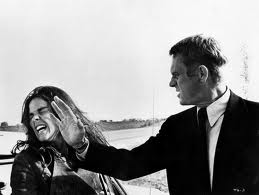Two days later, he was in Mexico City.
Fumes. Traffic. Men sweeping the streets with brooms.
Ice cream pushcarts. Taco pushcarts.
Billboards. Women.
Donkey carts. Plush cars. Buses.
Hooting and roaring.
Sweat at the back of his shirt.
His scalp tingling.
His nostrils full of charcoal smoke, exhaust.
The stench of seared meat.
As soon as he hit Mexico city, he went to a dealership and sold the Jeep for a pittance.
Then he bought a small, battered blue tin can of a car.
He paid the cash down on it, paid extra to have it held on the lot for him.
The Jeep screamed “American.”
The blue tin can– driving it he might pass for French, or even German.
He’d go deeper south in that. Deeper into his cover.
He’d kept a safe deposit box under one of his false names in a Georgetown bank.
A .44 pistol. An envelope full of US currency.
One hundred gold krugerands in a money belt.
Two passports.
The name on his current working passport: Cole James.
He’d bought it in French Guyana.
The Agency didn’t know.
The name on the other: Frank Younger.
*
He slept the first night in a fleabag hotel.
Had to avoid the luxury places.
At night he walked and walked around the great Plaza.
He went into a blazingly bright bar and ordered tequila, almonds, grilled shrimp.
He devoured it. Ravenous.
*
He took apart the pistol and cleaned and greased it on a newspaper spread over the coverlet of the hotel bed.
In the next room, a woman was panting and screaming.
He thought about it. Probably the fat whore he’d seen earlier, posed at the entranceway in the flashing neon.
He’d bought a bottle of Centenario. He took swigs from the neck.
Wiped his mouth with his hand.
Looked at himself in the faded and streaked mirror.
Ageing. Haggard from lack of sleep. Unshaven.
What now?
He didn’t know.
*
In the morning he walked around again.
He went into a cybercafe.
He sat at a computer.
It felt dangerous.
He didn’t open the browser. He finally just got up and walked out.
At a street stall, he bought a small Olivetti typewriter.
He carried it back with him to the hotel — a small black suitcase.
He didn’t have any real paper. He rolled a sheet of cigarette paper into the carriage.
He typed — click click click — Government by Shadows: The Group of 22.
*
At night he went out again.
Thirsty.
In a bar, he drank tequila.
He ate pork tacos from a banana leaf at a street stall.
As he made his way back to the hotel, having memorized every step, two rooster-sauntering men followed him.
They were wearing: shiny shoes, pleated trousers, colorful shirts, gold necklaces.
Both Mexicans.One had a greased ponytail.
He pondered it. They were take-off artists.
Ordinary criminals, looking for tourists.
He was only surprised they’d tagged him as American.
His blue jeans and white shirt — he could have been any nationality.
Or maybe they were going after Europeans, now, too?
He waited for them at a traffic blaring corner.
They parted slightly as they approached.
The one that wasn’t poneytailed had a goatee. And a gold tooth.
At a glance: no pistolas.
But the ponytailed one brought something out of his pocket.
Flick.
*
Greased Ponytail waves his switchblade lazily in the blue eyed man’s face.
Goatee takes hold of his shirt. Purses his lips to speak Mexican —
The blue eyed man grasps and twists Goatee’s shirt-holding hand palm upward and turns it so he lets go of the fabric and staggers, a wild Texas two-step.
Hits him twice in the throat, edge-of-hand blows.
It’s so quick that Greased Ponytail has time only to blink, once, before the blue eyed man snatches the toothpick from his lips and hits him viciously in the solar plexus.
Doubling over, Greased Ponytail retches and spills beer-shrimp-chilis-corn onto the sidewalk.
He, the blue eyed man, now takes control of the knife arm at the elbow joint, knocks the knife loose. It clangs, skitters, even as Goatee sinks to the sidewalk and lies gasping in the fetal posture, holding his neck.
The blue eyed man crouches. Picks up the knife. Shuts it. Sticks it in his pocket.
Puts the non-chewed end of the toothpick in his mouth.
Stands, slowly.
Looks at Greased Ponytail, who is still doubled over, wobbling and gasping for air.
At Goatee, who is jerking with agony and, like his amigo, wholly engrossed in the non-threatening task of trying to breathe.
Walks away.
Vayos con dios.




